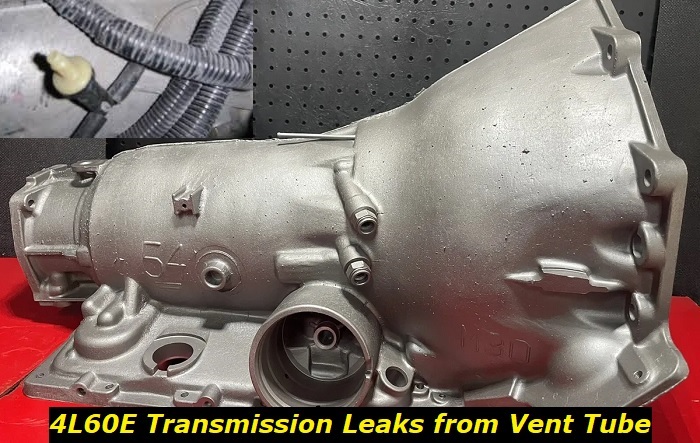The 4L60E automatic transmission is one of the most used gearbox models in the US. It was produced between 1991 and 2014 and was mostly installed in sports vehicles, SUVs, and offroad vehicles with V6 or V8 engines and with a lot of power. This is the bulletproof transmission that is certainly made to last. But it still has several flaws.
4L60 transmission highlights
- Average lifespan:230,000-250,000 miles
- Reliability Score:High
- Prone to minor issues:No
- Price for repair after failure:$1,000-$1,400
- Price for replacement:$2,500-$3,700
- Availability of parts:Good
- Common problems: Solenoid issues, friction plates wear, fluid pump issues, overheating problems.

Key facts about the 4L60E transmission
So, this transmission is legendary. It was made in 1991 and was installed in almost all big Chevrolet and GMC vehicles as well as in some models of Buick, Cadillac, Hummer, Isuzu, Oldsmobile, and even Pontiac and Saab. Many dozens of models throughout history used exactly this transmission.
Up to 2014, when it was discontinued, the transmission went through minor upgrades and kept the original engineering till the last day of its life. Even now hundreds of thousands of these transmissions are dashing through American (and not only American) roads.
Here's what you may want to know about the unit:
- this is a 4-speed automatic transmission with a conventional design;
- it was used with both rear-wheel and all-wheel drive types;
- the gearbox was used for the engines up to 5.7 liters and up to 360 lb-ft of torque;
- it has over 10 liters of ATF Dexron IV fluid in it;
- for a partial fluid change, you will need about 6 liters;
- the partial fluid change is recommended at least once every 50,000 miles;
- this is a big and heavy transmission with a weight of over 150 pounds.
The transmission was made exclusively by General Motors and was part of the proud 4L family of transmissions. It's very durable and reliable, and it doesn't have a lot of common issues. However, one of the problems that many owners report is the fluid leak directly from the vent tube. This problem usually comes because of bad maintenance or very hard use.
I should tell you that the transmission may last for decades only if used and maintained properly. If the gearbox problems are neglected and the car tows more than it can according to the driver's manual or if you use your GM SUV for racing, you will most likely kill this transmission much faster than you think.
Transmission fluid from the vent tube - why?
So, the 4L60E transmission has a vent tube in its construction. Originally, the fluid would not be pressed so hard in the gearbox that it would want to escape through the ventilation system. But if the fluid is not in its best condition and the solenoids of the valve body are not healthy, the gearbox may really fail and the fluid will leak through any weak place.
Here are the reasons why it may happen:
1) The fluid is extremely contaminated
Over time, the transmission produces a lot of different particles and sends them directly to the fluid. These may be the particles from the clutches that make the fluid thick and inefficient. Some metal shaves may also gather in the pan of the transmission. This is the reason why changing the fluid in your transmission is important.
After some time, the fluid may become so thick and contaminated that the filter won't be able to clean it. So, it will start affecting the solenoids and other parts. Eventually, this will create high pressure in the system and the fluid may start finding a way to escape from the transmission. One of the ways is through the vent tube.
2) Clogged solenoids
Usually, transmission solenoids get clogged exactly because of the problems with fluid. But sometimes, they may be clogged even when the fluid is newly changed and clean as the tear of a unicorn. In this case, some metal shaves may have got into the solenoids and blocked them. This will lead to lower pressure of fluid in some areas of the transmission and to higher pressure in other areas.
If you are not lucky to get high-pressure fluid near the ventilation system, the fluid may just leak through the tube. To solve this problem, you will need to replace or at least clean the solenoids in this transmission.
3) Brake band wear
After the transmission reaches about 120,000 miles, it may have its brake band worn and the parts of the band will also affect the condition of the fluid. It's important to catch the moment when the band is still OK and replace it. If your 4L60E transmission is over 150K miles and still with the original brake band, you may plan its replacement in the near future.
4) The transmission is overfilled
It may happen that a not-very-experienced mechanic filled the transmission with too much fluid. And now it creates super high pressure of the fluid which then needs to find the way out. The easiest way out is through the vent system.
5) The transmission is overheated
Overheated transmission may work harshly and mix air with the fluid creating a lot of chance for the fluid to escape through the vent tube. The transmission may overheat when you tow something heavier than allowed by the manufacturer. Or when you drive at a very high speed for an unusually long time. This transmission is certainly not made for this.
6) The torque converter or clutches in it are dead
The torque converter may also mix air with fluid when it has bent blades or worn clutches. This is a pretty common reason for fluid leaks in the 4L60E transmissions that made it to over 200,000 miles. It's a very responsible time and you should quickly react to such cases. Otherwise, the gearbox may just die and require replacement.
Connecting the vent tube with the dipstick - a good idea?
In forums, you can find a very common solution to this problem. People take an additional tube or pipe and connect the vent tube with the dipstick hole. This way, the fluid that is leaking through the vent tube eventually gets back into the transmission.
This is a bad solution because it makes your transmission lose the ventilation function and also may lead to issues with inner pressure. This may be a temporary solution, but not the best way to solve the problem forever.
How many miles will the 4L60E transmission live?
So, the 4L60E transmission is designed to last more or less as long as the engine. It should be OK to go about 220,000 miles or even a little more. Also, when it has over 200K miles on it and starts showing serious signs of damage, owners usually buy a remanufactured used transmission, install it, and drive another 100K miles without having a lot of headaches with this unit.
But I should say that repairing the transmission is not a bad option. It may take more time in the repair shop but it will cost you less money than replacing the gearbox entirely. I suppose, with a proper repair at about 200,000 miles, this transmission can make it to 320-350 thousand miles.
Can you drive when the transmission fluid is leaking through the vent tube?
No, it's not a very clever solution to just ignore the problem and keep driving.
First of all, your gearbox will quickly develop a low fluid level problem and will eventually die if you don't pay attention to the condition of the unit.
Also, ignoring this problem will result in the death of your gearbox while the prompt reaction will save it and allow you to drive it for a much longer time without spending thousands of dollars on a new transmission.
But you can still drive several miles without calling a tow truck if you notice the transmission leaking. Just get directly to the repair shop.
Final thoughts
You shouldn't ignore any problems with your automatic transmission. If you keep ignoring it, you may end up having to buy a new transmission and pay for its replacement. Given the 4L60E is a very durable unit, you can easily get it past 200,000 miles. Just keep maintaining it as you should and react quickly to any signs of damage.
Also, avoid DIY repairs like connecting the vent tube with the dipstick hole. This will not save the transmission and will only make the problem worse. Good inspection and proper repair is the only good choice, in this case.
About the authors
The CarAraC research team is composed of seasoned auto mechanics and automotive industry professionals, including individuals with advanced degrees and certifications in their field. Our team members boast prestigious credentials, reflecting their extensive knowledge and skills. These qualifications include: IMI: Institute of the Motor Industry, ASE-Certified Master Automobile Technicians; Coventry University, Graduate of MA in Automotive Journalism; Politecnico di Torino, Italy, MS Automotive Engineering; Ss. Cyril and Methodius University in Skopje, Mechanical University in Skopje; TOC Automotive College; DHA Suffa University, Department of Mechanical Engineering






Add comment